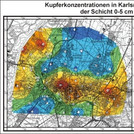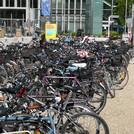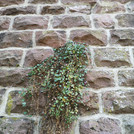Urban ecology
Lead: M. Sc. Alice Krehl
Cities are the habitat where most people live. As part of the biosphere, cities are anthropocentric and have been developed by and for humans. The continuing trend towards urbanisation ensures that more and more people will live in cities. Without the division of the so-called anthroposphere into agriculture and cities, it is difficult to imagine that as many people as currently live on planet Earth. In Germany, cities are the most species-rich habitats after the floodplains due to the variety of different ecological niches in the smallest space, apart from the soils that are often negatively affected by compaction, sealing or pollutants. Since the city is such an important habitat for many people, where they spend a large part of their lives, an ecological, sustainable design and development of urban space that promotes their health is of utmost importance. This is not only about the pollution of soil, air and water, which is nowadays regulated to some extent by laws, regulations and the competent authorities, at least in the more prosperous countries, but rather also about the creation and preservation of recreational areas in and the climate adaptation of cities. Access to green spaces and the cooling influence on the strong warming of cities (heat island city) have a positive effect on the health status of the urban population.
Our working group is working in this field of action. Based on biotope type mapping and tree mapping, we determine the ecosystem services in cities and develop concepts to optimise them. Recreational potentials are identified, as are climate adaptation measures. Using modern measurement techniques, we map the extent and strength of urban heat islands and polluted areas of the urban atmosphere. Specifically, we are working on
- Sustainable management of resources in cities
- Pollution of the urban atmosphere and urban soils
- Quantification of ecosystem services in cities
- Biotope type mapping and tree mapping to identify recreational potential in cities
- Analysis of urban heat islands












